- Continue Shopping
- Your Cart is Empty
Tepache: Pineapple Wine

What You'll Need
Equipment
- measuring cups
- good kitchen knife and clean cutting surface
- fancy pineapple corer (optional)
- 1/2 gallon mason jar with lid and ring
- mesh strainer
- paper towel or tea towel
- bottling funnel
- air tight bottle for storage
Ingredients
- outer peel and core of one organic pineapple
- filtered water
- 1 cup brown sugar
- 1 cinnamon stick
- 3 or 4 whole cloves and/or star anise
We made this pineapple wine a while back with our pal Alex Lewin; the recipe is featured in his latest book Kombucha, Kefir, and Beyond: A Fun and Flavorful Guide to Fermenting Your Own Probiotic Beverages at Home. It’s a perfect summer beverage, light and fruity and tart and refreshing.
Tepache is a lightly fermented pineapple wine that has very little alcohol, usually about 2% ABV. Because it ferments for so short a time, it’s an easy one to make at home. In Mexico, where the drink originates, it is often sold chilled by street vendors, sometimes with a splash of beer in it to up the alcohol content. We like it just as it is, with a little residual sweetness left over from the pineapples, but a pleasantly tart, fermented flavor. It can be used in cocktails, too, as a lovely base flavor that combines elements of simple syrup and acidity.
If you let tepache ferment for longer than 3-5 days, you run the risk of making pineapple vinegar rather than sparkling tepache. That’s good, too, though! If the tepache has gotten too tart for your liking, strain out the fruit after 1 week to eliminate mold issues, and then continue fermenting it at room temperature for another 3-4 weeks.
Alex is also the author of Real Food Fermentation: Preserving Whole Fresh Food with Live Cultures in Your Home Kitchen.
For this recipe, we especially recommend using ripe organic pineapple, as the skin is what is used to make the wine. Conventionally grown pineapples are often sprayed with unmentionable chemicals that decimate the wild yeasts this recipe relies on to initiate fermentation, as well as being a safety concern; consumers are not expected to eat the peel, and there may be residual chemicals left on the surface of conventional pineapples. Choose ripe organic pineapples with dark yellow that shows through the brown patterns of the skin. A ripe pineapple smells strongly of pineapple; an unripe one has almost no smell at all. Use your nose and eyes to pick a good one.
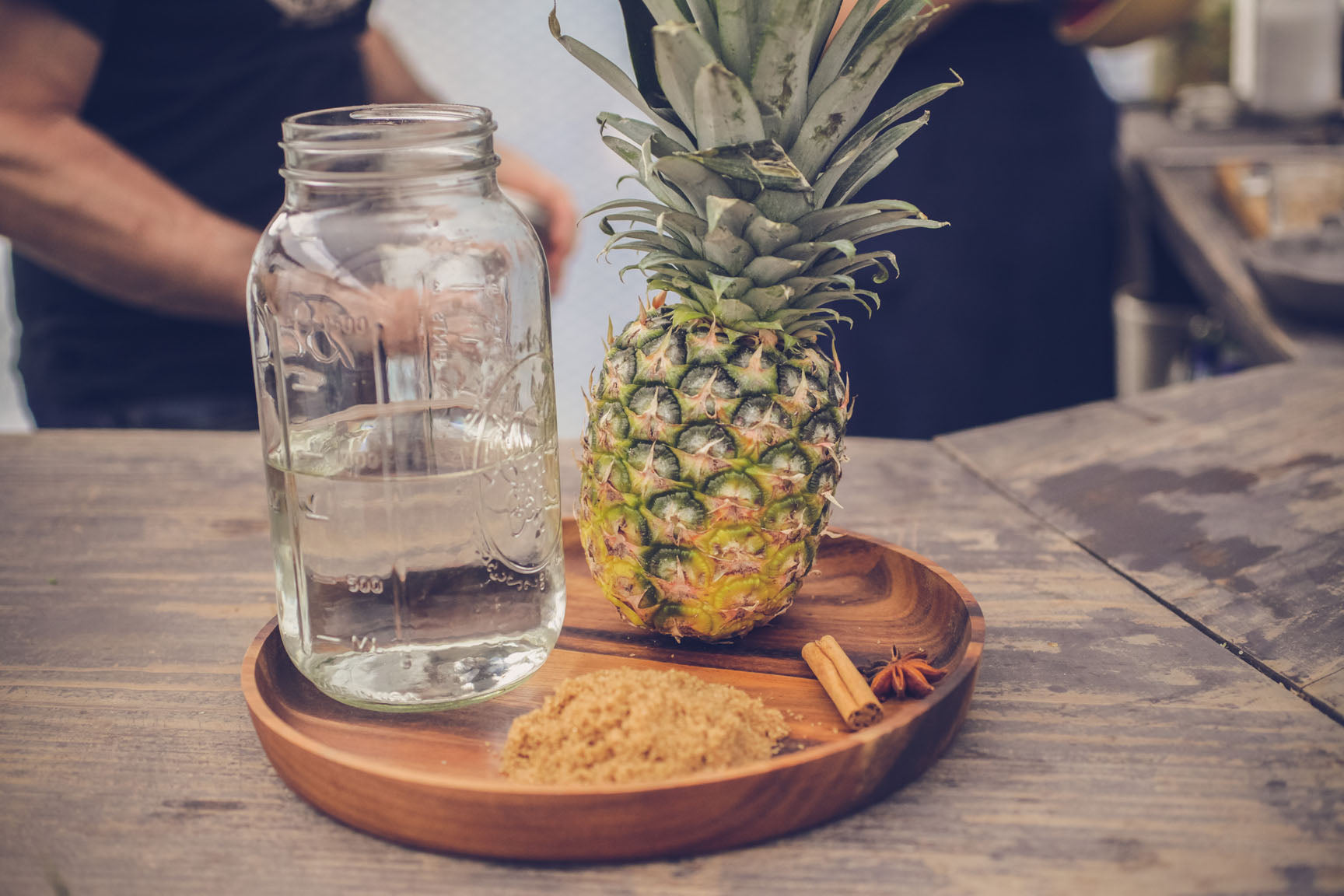 Directions
Directions
Remove the peel and core from your ripe organic pineapple.  Eat the flesh as you see fit; it’s the skin and core we are using for this pineapple wine. A pineapple corer works wonders, but a good chef’s knife can be used, as well.
Eat the flesh as you see fit; it’s the skin and core we are using for this pineapple wine. A pineapple corer works wonders, but a good chef’s knife can be used, as well. 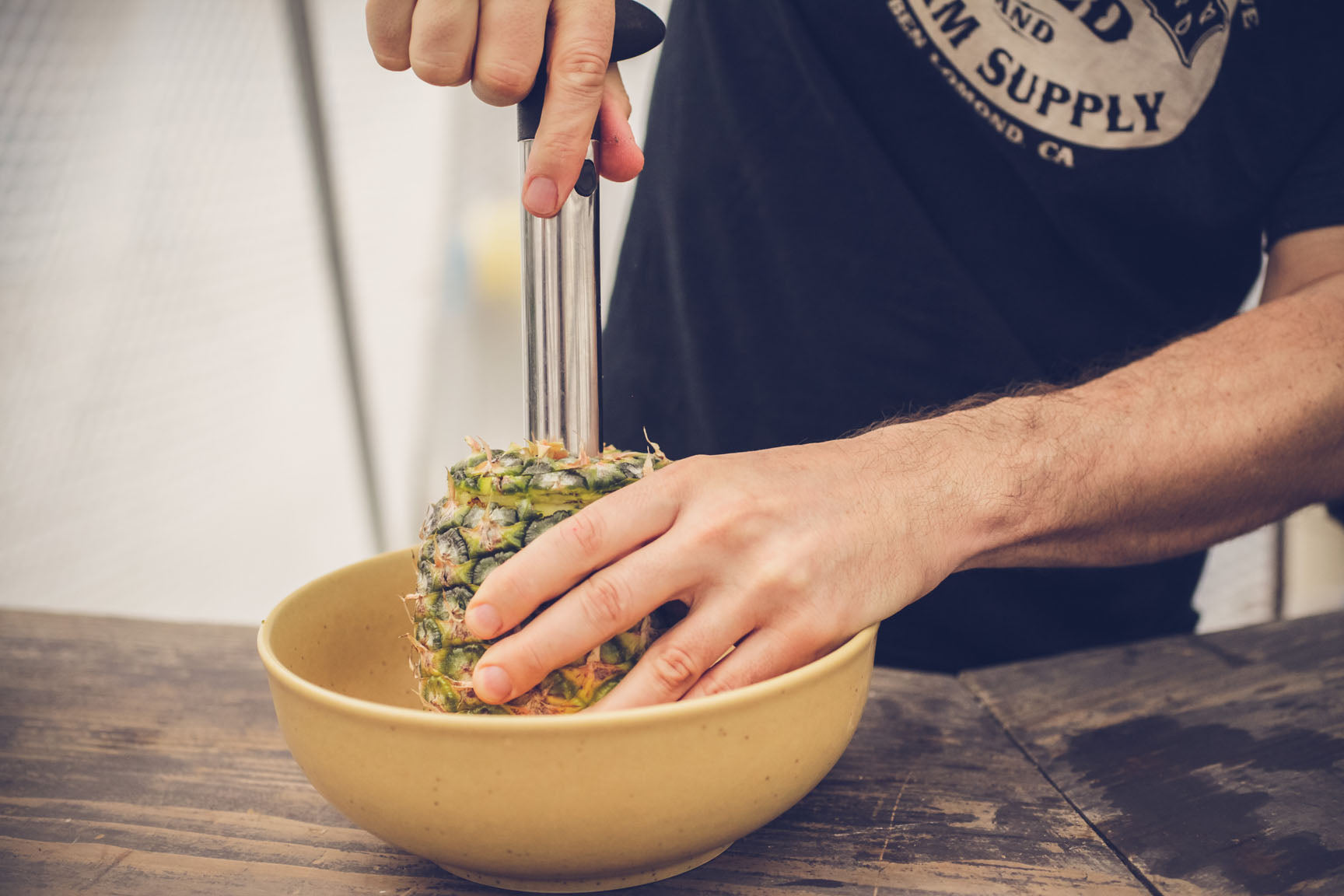
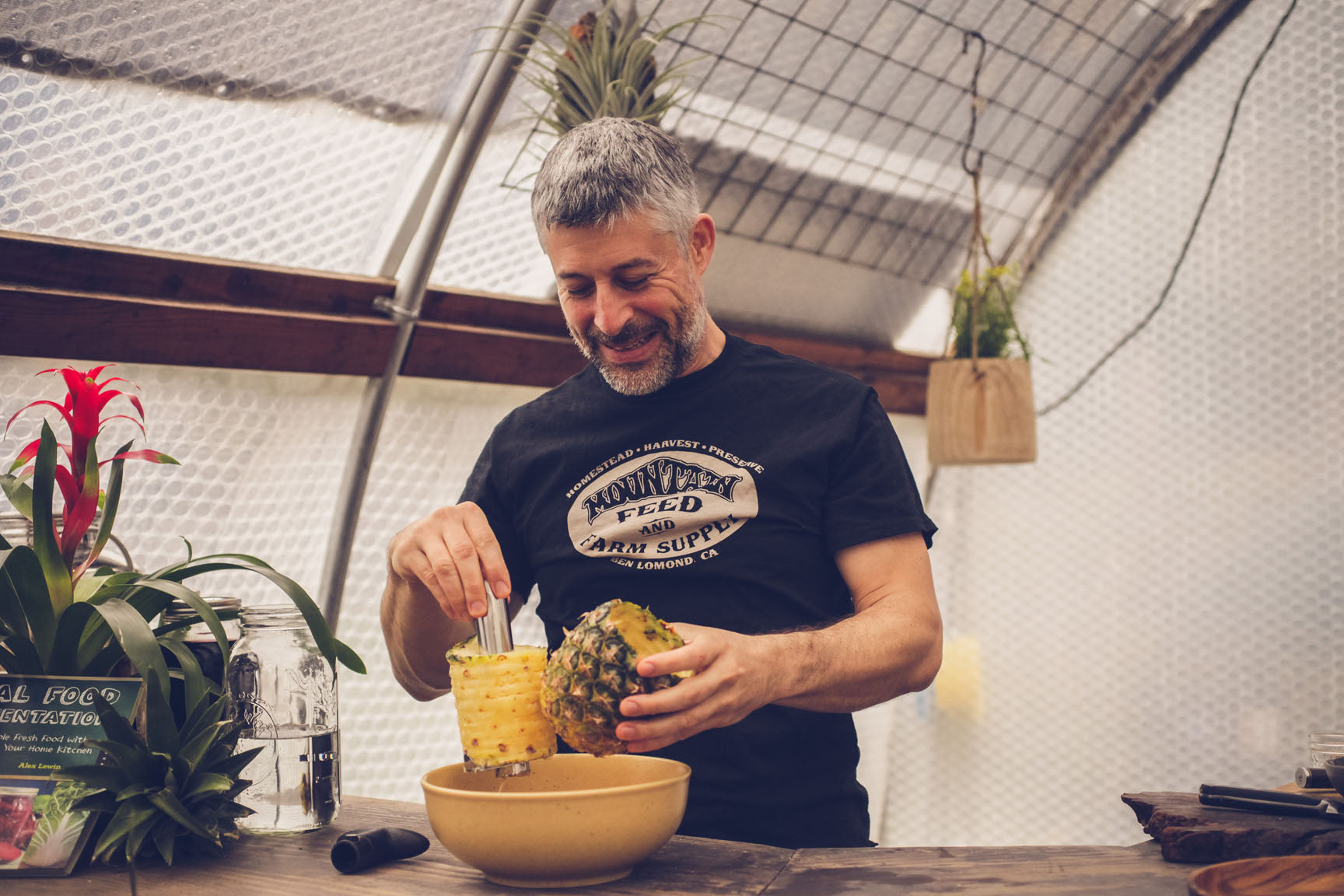 Mind the spines!
Mind the spines!
Slice the peel of the pineapple into 1" squares.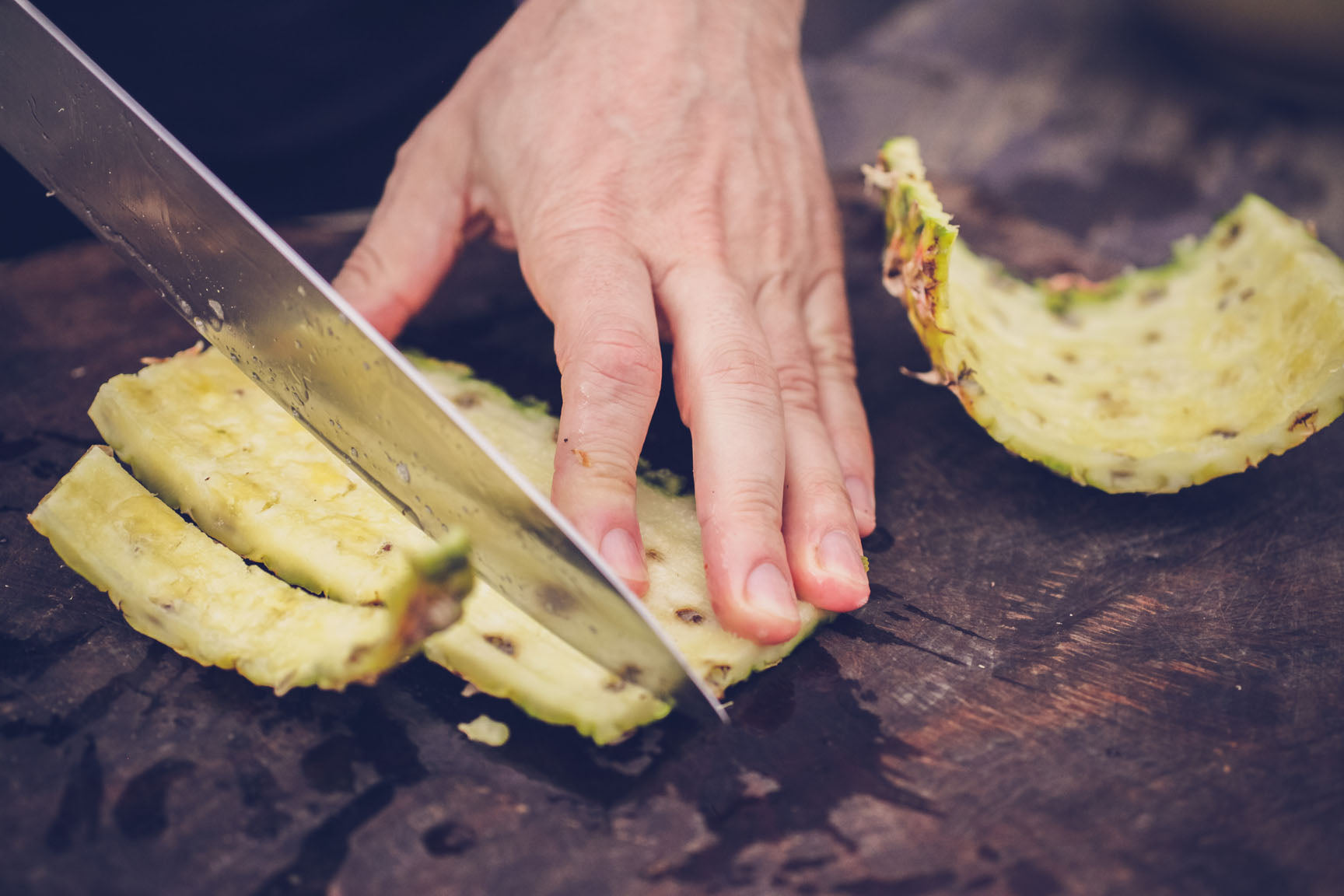

Place the brown sugar into your jar. Add 1 cup of water, secure the lid and shake to dissolve the sugar.
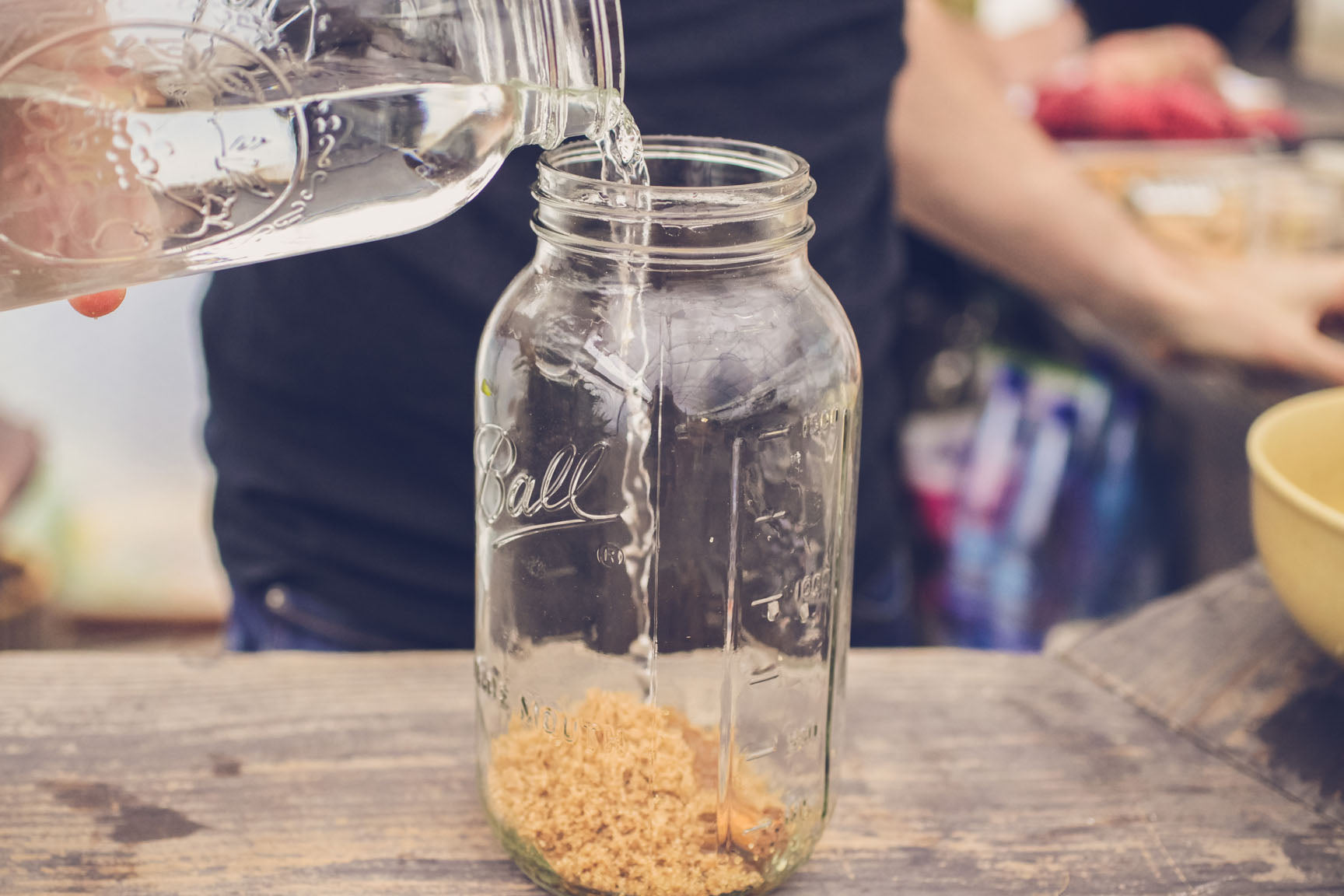
 Add the cinnamon and star anise to the brown sugar solution.
Add the cinnamon and star anise to the brown sugar solution.
 Place the peel and core of the pineapple into your jar.
Place the peel and core of the pineapple into your jar.
 Top off the container with enough water to cover the peels, and stir to combine.
Top off the container with enough water to cover the peels, and stir to combine.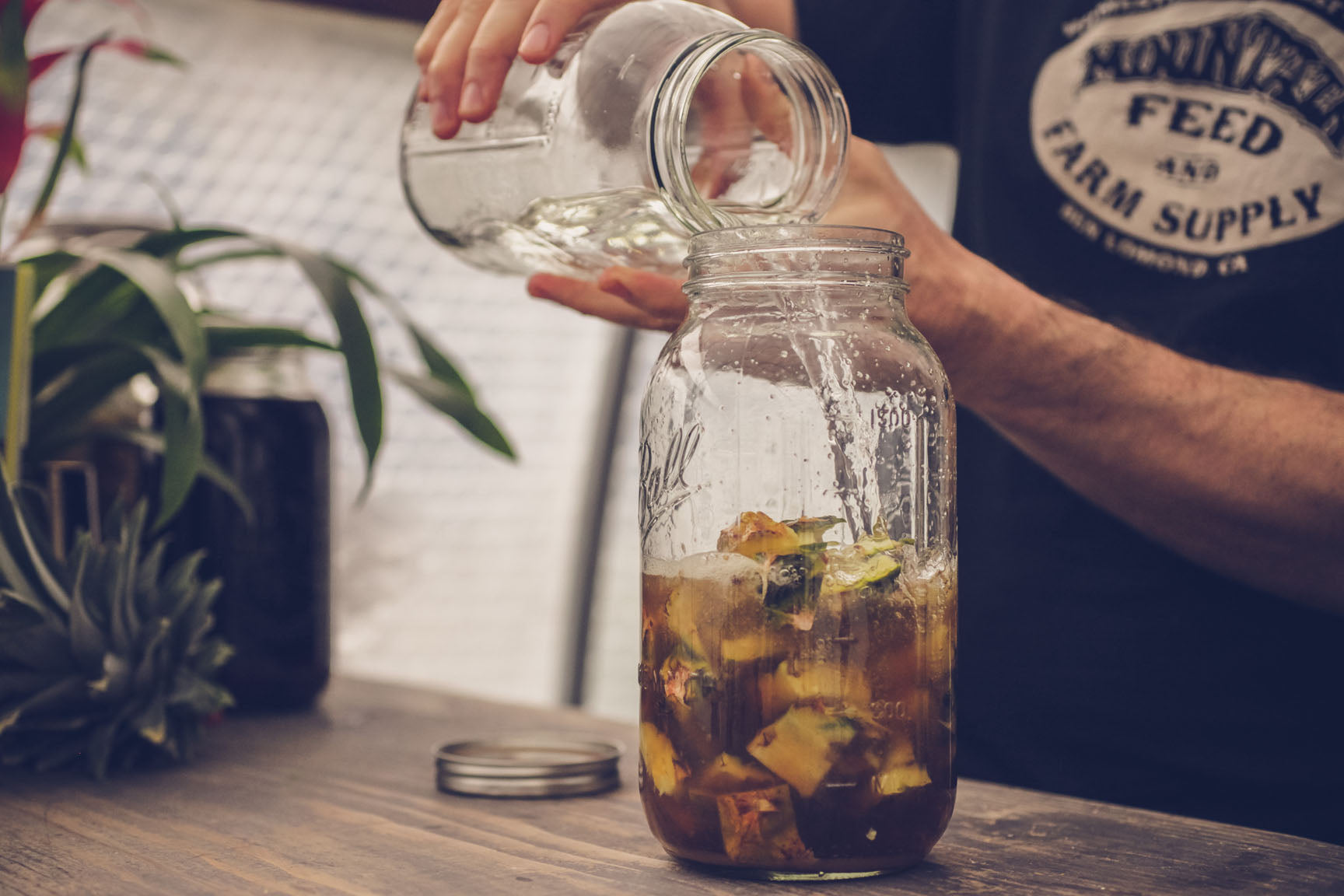 Cover the vessel with a clean cloth or paper towel, and secure with a rubber band or your canning lid band.
Cover the vessel with a clean cloth or paper towel, and secure with a rubber band or your canning lid band.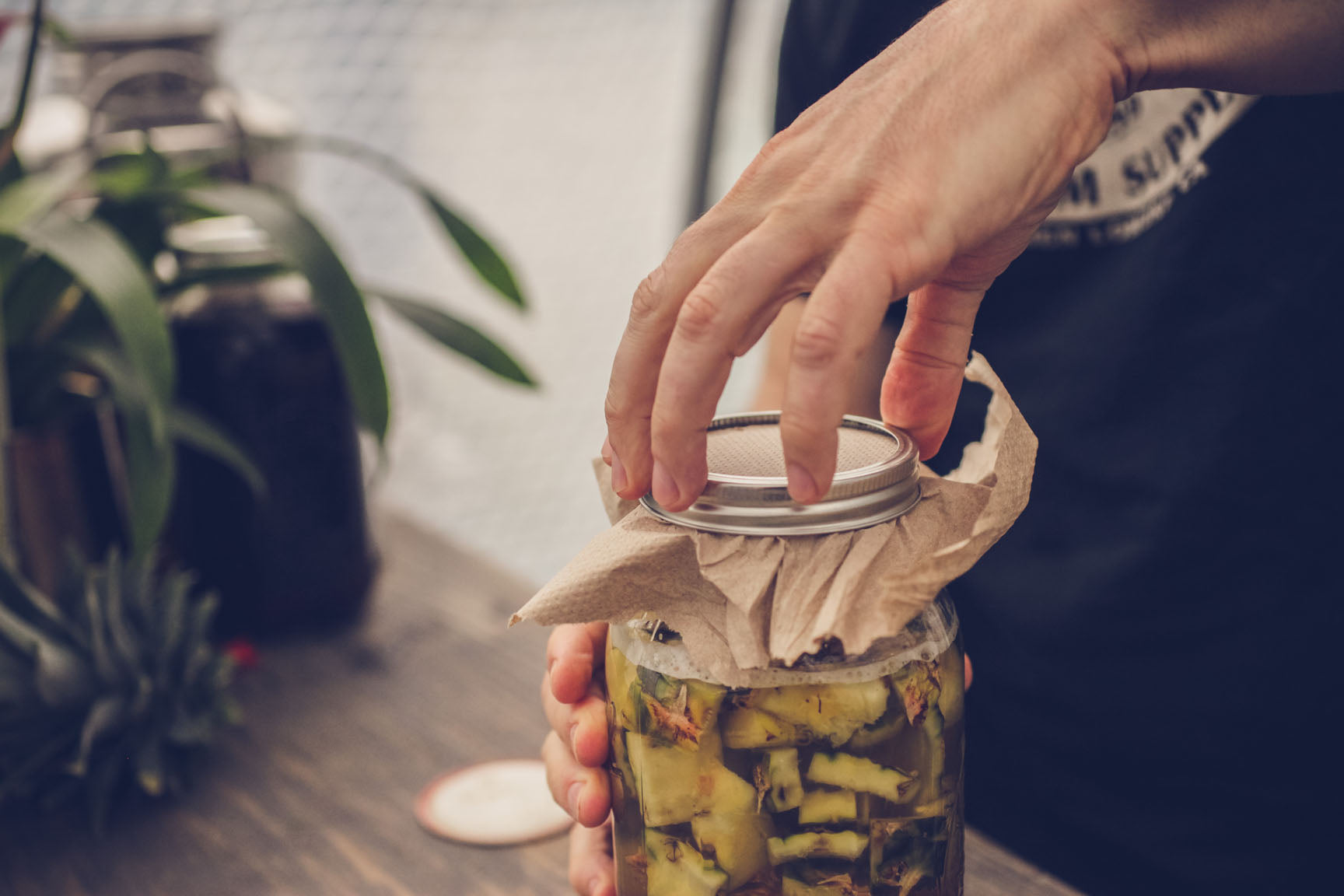 Allow the mixture to sit at room temperature for 3-5 days, out of direct sunlight.
Allow the mixture to sit at room temperature for 3-5 days, out of direct sunlight.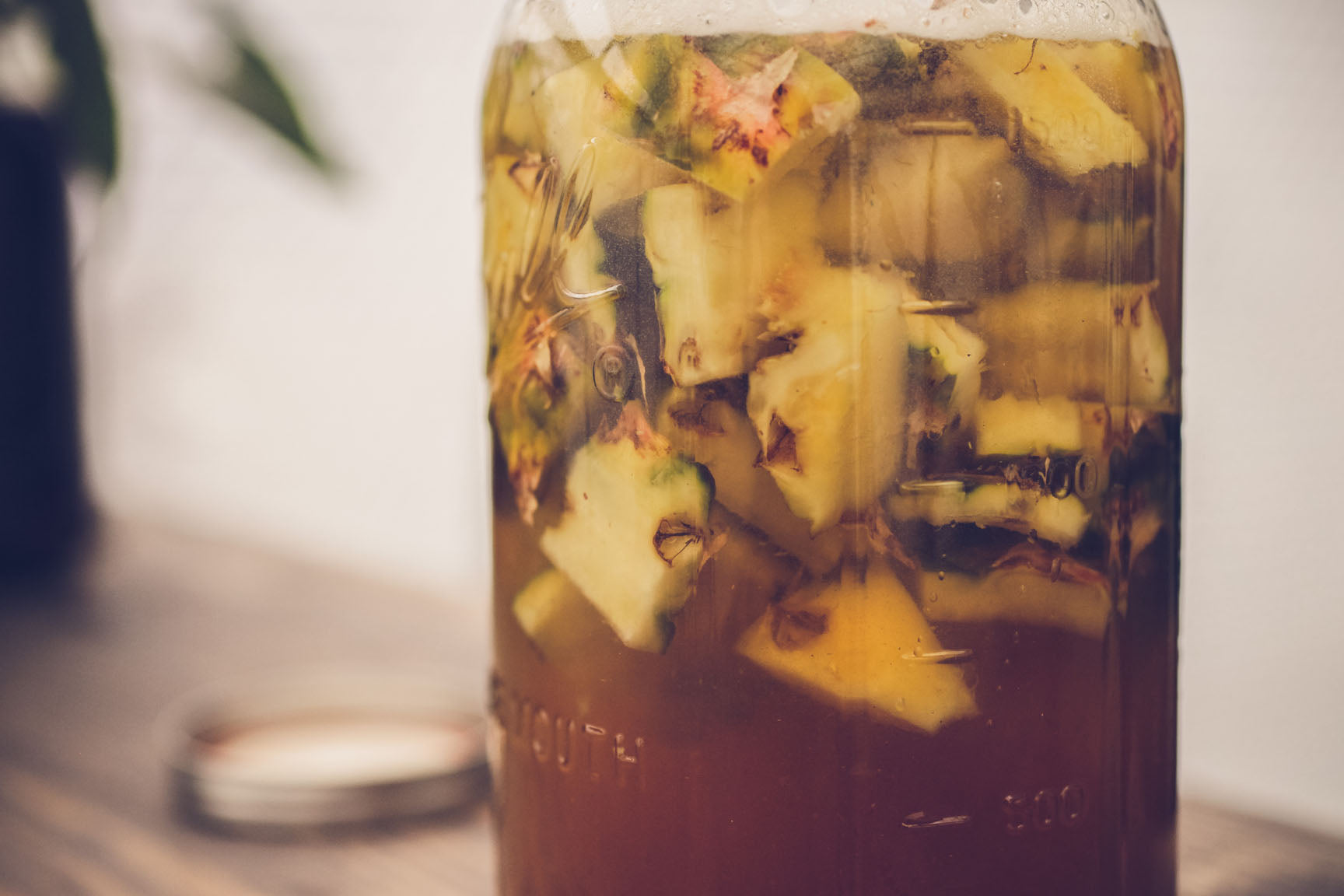 Taste the mixture on day 3. Depending on the temperature of the room, the ferment may be done by now; the warmer it is, the faster the ferment progresses. When the flavor starts to become tart but still has some residual sweetness from the pineapple, it is finished.
Taste the mixture on day 3. Depending on the temperature of the room, the ferment may be done by now; the warmer it is, the faster the ferment progresses. When the flavor starts to become tart but still has some residual sweetness from the pineapple, it is finished.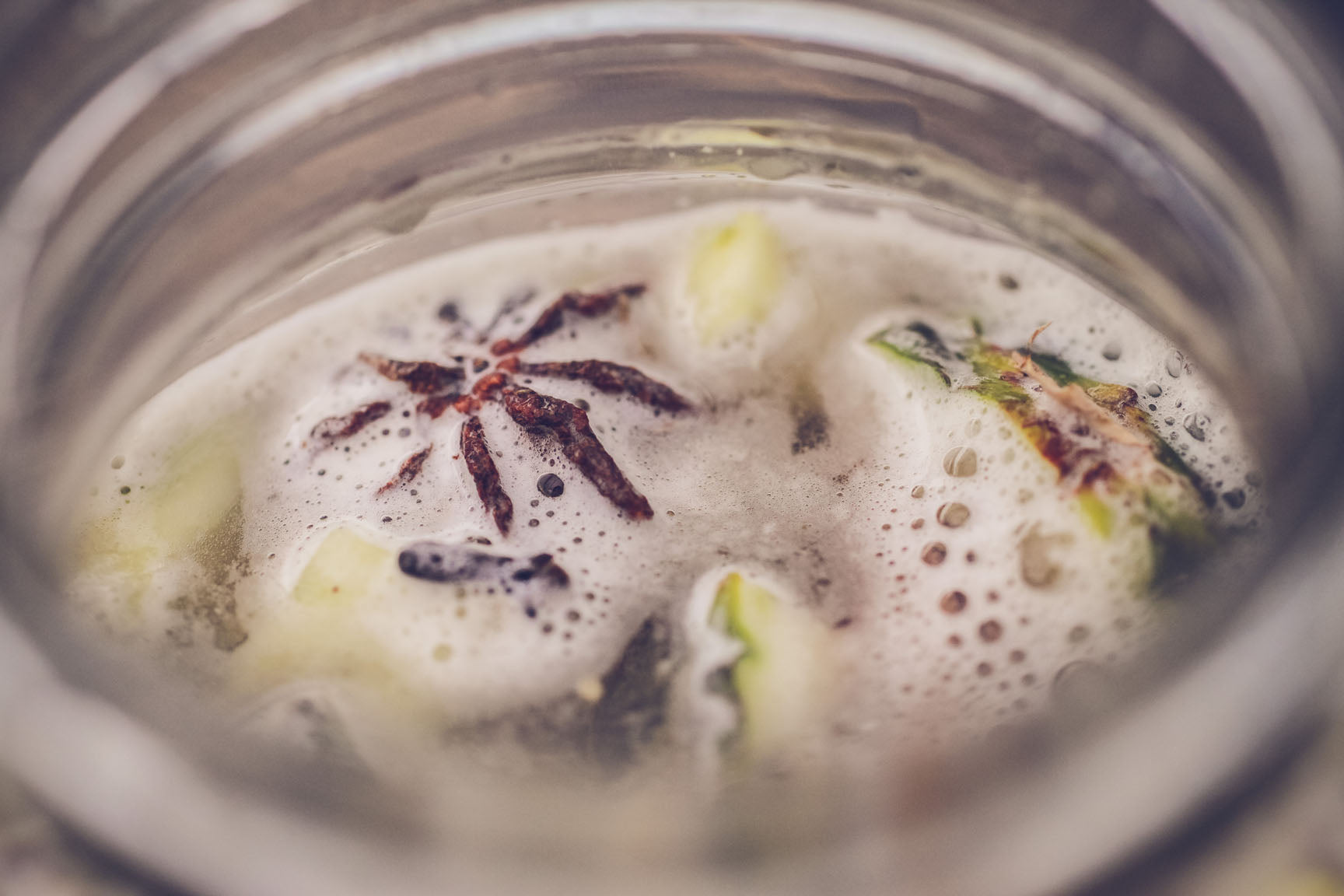 When the tepache has reached a flavor to your liking, pour it through a strainer into bottles or airtight jars.
When the tepache has reached a flavor to your liking, pour it through a strainer into bottles or airtight jars. 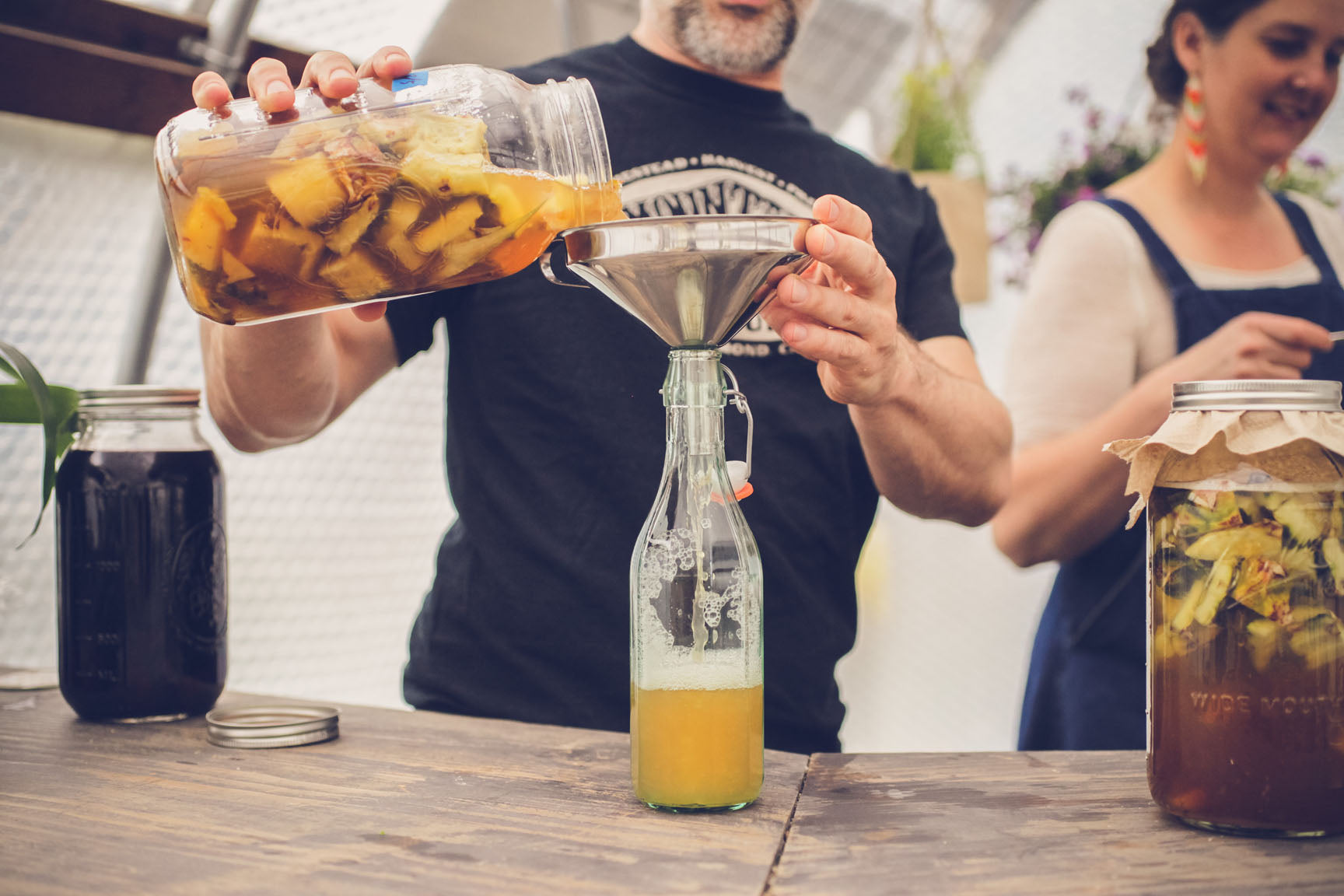 Refrigerate and serve cold.
Refrigerate and serve cold.
Cheers!
 Over to You
Over to You
It’s part of our mission here at Mountain Feed to help you make delicious, sustainable, homemade food more often. Stop by and say hello on Facebook, Twitter, Instagram or Pinterest. Or, as always, you can do it the old-fashioned way and come by the store to speak with one of our in-house experts.

 Directions
Directions Over
Over